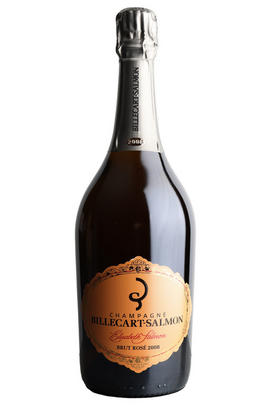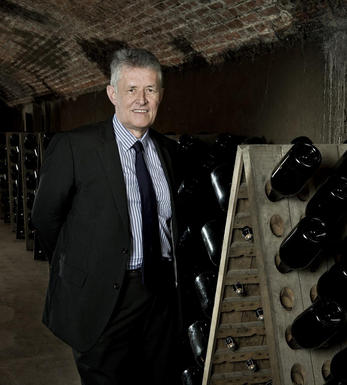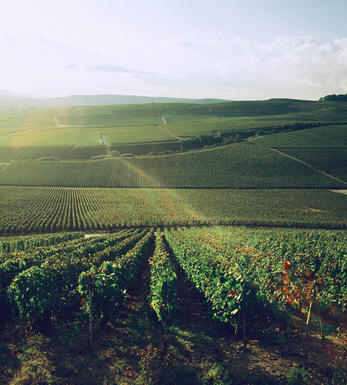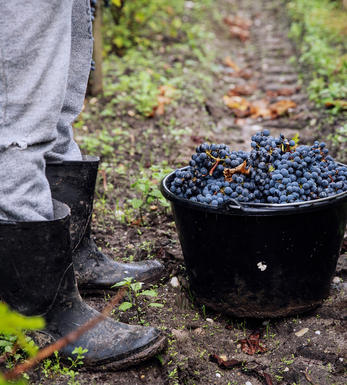
2008 Champagne Billecart-Salmon, Cuvée Elisabeth Salmon, Rosé, Brut

Critics reviews
A superb vintage of this renowned prestige cuvée, this is made from a base of 55% Pinot Noir and 45% Chardonnay, to which is added 9% of red wine. Despite ageing on its lees for 10 years, it remains almost shockingly youthful, its vividly primary flavours of red cherry, strawberry and nectarine wrapped up in a taut, tense frame. It’s silky in texture and intricately complex on the long, elegantly harmonious finish, underlined by a saline chalkiness, and it demonstrates all the requisite completeness and character for long ageing, promising a slow and dignified evolution to come.
Drink 2021 - 2050
Peter Liem, Decanter.com (October 2021)
About this WINE

Champagne Billecart-Salmon
Champagne Billecart-Salmon was founded in 1818 in the village of Mareuil-sur-Aÿ near Epernay. It remains family-owned and run; Mathieu Roland-Billecart represents the seventh generation here, following in the footsteps of founders Nicolas-François Billecart and Elisabeth Salmon.
A family tasting committee meets weekly, joined by chef du cave Florent Nys. The eight-person panel includes three generations of the family, notably including Jean Roland-Billecart (who alone has over 75 vintages of experience). Not one cuvée is released until every member of the committee agrees on the blend.
Billecart-Salmon is a large Champagne House, with around 100 hectares of vines of its own. The process of organic conversion for the vineyards was started in 2019. The house also buys fruit from growers covering another 300 hectares of vines. Most of the fruit comes from the Champagne sub-regions of Montagne de Reims, Vallée de la Marne and Côte des Blancs.

Rosé Champagne
Rosé wines are produced by leaving the juice of red grapes to macerate on their skins for a brief time to extract pigments (natural colourings). However, Rosé Champagne is notable in that it is produced by the addition of a small percentage of red wine – usually Pinot Noir from the village of Bouzy – during blending.
Recommended Producers : Billecart Salmon (Elizabeth Salmon Rose), Ruinart

Champagne blend
Which grapes are included in the blend, and their proportion, is one of the key factors determining the style of most Champagnes. Three grapes are used - Pinot Noir, Chardonnay and Pinot Meunier.
26% of vineyards in Champagne are planted with Chardonnay and it performs best on the Côtes des Blancs and on the chalk slopes south of Epernay. It is relatively simple to grow, although it buds early and thus is susceptible to spring frosts. It produces lighter, fresher wines than those from Burgundy and gives finesse, fruit and elegance to the final blend. It is the sole grape in Blancs de Blancs, which are some of the richest long-lived Champagnes produced.
Pinot Noir accounts for nearly 40% of the plantings in Champagne and lies at the heart of most blends - it gives Champagne its body, structure, strength and grip. It is planted across Champagne and particularly so in the southern Aube district.
The final component is Pinot Meunier and this constitutes nearly 35% of the plantings. Its durability and resistance to spring frosts make the Marne Valley, a notorious frost pocket, its natural home. It ripens well in poor years and produces a soft, fruity style of wine that is ideal for blending with the more assertive flavours of Pinot Noir. Producers allege that Pinot Meunier lacks ageing potential, but this does not deter Krug from including around 15% of it in their final blends.


Buying options
Add to wishlist
Description
A superb vintage of this renowned prestige cuvée, this is made from a base of 55% Pinot Noir and 45% Chardonnay, to which is added 9% of red wine. Despite ageing on its lees for 10 years, it remains almost shockingly youthful, its vividly primary flavours of red cherry, strawberry and nectarine wrapped up in a taut, tense frame. It’s silky in texture and intricately complex on the long, elegantly harmonious finish, underlined by a saline chalkiness, and it demonstrates all the requisite completeness and character for long ageing, promising a slow and dignified evolution to come.
Drink 2021 - 2050
Peter Liem, Decanter.com (October 2021)
wine at a glance
Delivery and quality guarantee